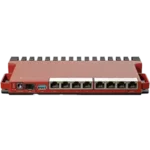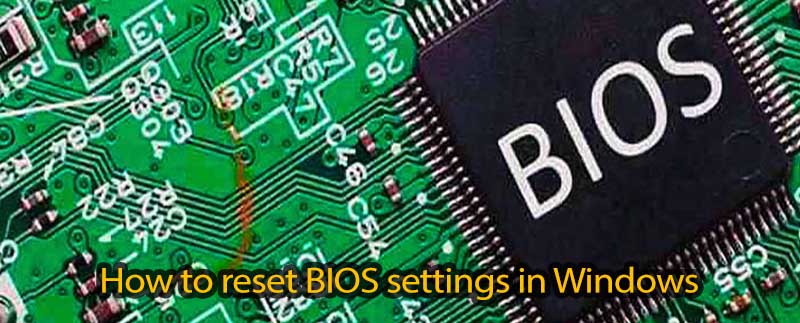Resetting your BIOS (Basic Input/Output System) can help resolve a variety of hardware or configuration issues. Whether you’re troubleshooting boot problems, overclocking errors, or just want to revert to the factory settings, performing a BIOS reset can restore stability. In this article, we’ll walk you through how to reset your BIOS settings in Windows, the reasons why you might need to do so, and additional tips to ensure a smooth reset.
Fast Network Installation Services By ITMan
How to Reset BIOS Settings in Windows
Here’s a step-by-step guide to resetting your BIOS settings:
Method 1: Reset BIOS Through the BIOS/UEFI Menu
- Restart Your Computer
- Click on the Start menu, select the Power option, and choose “Restart.”
- Enter BIOS/UEFI
- As soon as the system restarts, press the BIOS/UEFI access key. This key varies by manufacturer but is usually F2, Delete, F10, or Esc. A message like “Press [key] to enter Setup” will flash on the screen.
- Navigate to the Reset Option
- Once inside the BIOS/UEFI menu, use the arrow keys to navigate to the “Exit” or “Restore” section. The exact location and terminology can differ depending on your motherboard, but look for terms like:
- Load Setup Defaults
- Reset to Default
- Restore Factory Settings
- Once inside the BIOS/UEFI menu, use the arrow keys to navigate to the “Exit” or “Restore” section. The exact location and terminology can differ depending on your motherboard, but look for terms like:
- Select and Confirm
- Choose the reset option and confirm your selection. Save the changes and exit BIOS. Your system will reboot with the default BIOS settings restored.
Method 2: Remove the CMOS Battery
- Shut Down and Unplug the Computer
- Ensure the computer is completely powered off and unplugged to avoid any electrical risks.
- Open the Case and Locate the CMOS Battery
- Open your computer’s case and find the round CMOS battery (it looks like a coin). The CMOS battery stores BIOS settings even when the computer is off.
- Remove and Reinsert the Battery
- Carefully remove the battery for about 5–10 minutes. This will reset the BIOS. Reinsert the battery and close the case.
- Turn On the Computer
- Power on the computer. The BIOS should be reset to default settings.
Method 3: Use a Motherboard Jumper
- Power Off the Computer and Unplug It
- Just like with the CMOS method, make sure the computer is fully powered down.
- Find the CMOS Jumper on the Motherboard
- Look for a small jumper labeled CLR_CMOS or Reset BIOS on your motherboard. This is a small plastic piece covering two metal pins.
- Move the Jumper to Reset the BIOS
- Move the jumper from its default position to the reset position (typically covering a different set of pins). Leave it there for a few seconds, then return it to its original position.
- Restart the Computer
- Plug in and power on your computer. The BIOS settings will be reset to their defaults.
Why Should You Reset BIOS?

There are several reasons why resetting your BIOS may be necessary:
- Incorrect Configuration Changes
If you’ve made changes to your BIOS settings and your system is no longer functioning correctly, resetting can revert it to a stable state. - Troubleshooting Boot Issues
Sometimes, your computer may refuse to boot due to incorrect BIOS settings. Resetting the BIOS can help restore the boot process. - Overclocking Gone Wrong
Overclocking can push your hardware beyond its limits. If the system becomes unstable or fails to boot, resetting the BIOS will undo any risky changes. - Preparing for a Hardware Upgrade
Resetting the BIOS is a good practice when installing new hardware like a motherboard, CPU, or GPU, as it can clear out any conflicting settings. - Virus or Malware Affecting BIOS
In rare cases, certain types of malware can affect BIOS settings. A reset can help remove any harmful changes and restore your system.
What Happens After You Reset BIOS?
After resetting the BIOS, your computer will revert to its factory default settings. Here’s what you should expect:
- Reconfiguration of Settings
Any custom settings you made—such as boot order, time settings, or overclocking adjustments—will be lost, so you may need to configure those again. - Driver and Software Changes
BIOS resets don’t impact your operating system or installed software, but you may need to update your drivers, especially if you had installed specific ones for overclocking.
When Not to Reset BIOS
While resetting the BIOS can solve many issues, it’s not always the best solution. Here are a few situations where resetting the BIOS may not help:
- If You Have a Hardware Failure
If your issue is caused by faulty hardware, resetting the BIOS won’t fix the problem. It’s important to diagnose the hardware first. - If the BIOS Itself Is Corrupted
In cases where the BIOS itself is corrupted, a reset may not work, and you might need to reflash the BIOS instead.
Tips for Managing BIOS Settings After a Reset
- Create a BIOS Backup
Some modern motherboards allow you to save your current BIOS configuration. This way, if you need to reset the BIOS, you can restore your preferred settings easily. - Keep BIOS Updated
Ensure you are running the latest BIOS version for your motherboard to benefit from new features, bug fixes, and improved stability.
Source : www.cisco-shabake.com














